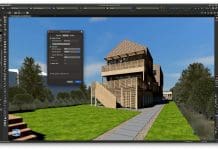John Adams, BIM Product Owner at 4Projects by Viewpoint describes what BIM means…
At the Viewpoint North American user conference in Portland Oregon earlier this year I presented the theory behind Viewpoint’s BIM strategy. Because our goal of developing the best Common Data Environment in global construction is heavily influenced by the UK BIM mandate, the diagrams and processes of PAS1192:2/3 featured heavily, and information exchange and activities either side of the contract line were discussed in some depth. Nowadays, the audience rates the speakers on mobile devices and comments were captured in snappy tweet sized snippets, so the feedback wasn’t long in coming. The most fascinating was ‘Very informative, but the session wasn’t about BIM’. If the process of building an information model as a team to inform and enrich the design – build – operate lifecycle isn’t BIM, what then is?
It’s clear that BIM means many things to many people.
This seemingly bizarre comment made me think. Words and concepts behind acronyms are overshadowed by the desire to adopt new technologies to improve the processes and parts of the project puzzle the beholder occupies. The designers see reusable design artefacts, the contractors see the greatly improved design review process, estimators can see the quantity take-off potential, and the clients are promised better handover information. It’s rather similar to the Indian fable of The Blind Men and the Elephant – the true form of BIM is masked by perspective.
At 4Projects by Viewpoint in Newcastle we see the whole picture, or indeed, the elephant in the room, every day. Our users span the entire asset lifecycle from concept sketches, through construction and use to demolition. The B555 roadmap describes the need for a common data environment on both sides of the contract line so that information in the project information model (PIM) can be curated collaboratively by the tier 1 appointments and their supply chains, before being passed into an asset information model (AIM) for the clients operational use. Critically this AIM information should be structured in the same way as PIM. When the next project starts, the information can be churned back into the project as a key element of the briefing and tender process. But the self-populating employers information requirements (EIR) based on learnt wisdom from previous projects is currently a long way from fruition.
Car manufacturers have already created cleaner flows of products and data from inception to the hands of consumers. A new car comes with a handbook on operation and maintenance, the specification of the wiring or chassis is not relevant to the owner. In a similar way a building should be delivered with a well ordered handbook of relevant information. COBie is designed for this purpose; although each building is unique and requires tailoring of the required elements.
Why, also, do major construction companies and design practices adopt an internal facing strategy for BIM, when the government is encouraging a more external facing collaborative approach? Moving past this phase as we approach 2016 is the key challenge, and no one business can do it alone.
Perhaps delivering Level 2 ahead of the mandate is stalling for some because they believe their partners haven’t completed the required work to reach this level, and focus therefore on matters that can be addressed today like developing a clash detection strategy, or deploying new BIM authoring software.
One of the most commonly cited shortcomings is the quality of EIRs. Lacking a fundamental digital project briefing document draws the focus away from creating a rigorous COBie delivery process. This is a symptom however, rather than the cause. How can a client prepare an adequate EIR when they don’t know what data they need, or are able to, procure.
With prime responsibility are the facilities management software vendors. It is often said that until the FM tools can take COBie, the requirements cannot be set and, in turn delivered. FM software vendors refute this. They say that as soon as they know which parts of COBie their customers care about, they’ll happily map COBie to their tool without risking access to legacy data. The FM world is aware of BIM and its consequences, but delivering BIM for FM tools which are fully ‘COBie ready’ is like designing HD ready televisions in the days when we only had 4 channels. The recent release of BS1192:4 was a key step towards BIM for FM in the UK, but software is not developed overnight and until this standard takes hold in live contracts the scope of works will remain incomplete.
Clients also take issue with the project team for not offering a menu of data for them to choose from; a kind of data takeaway menu allowing decisions to be made at the tender stage about which bidder offers not only the best price and value in terms of the physical project, but allowing the data product on offer to be judged as part of the process. But as with the FM conundrum the contractor counters with the need to understand the scope of works before pricing the job. As it is, BIM consultants are currently working hard to uncover the client’s data needs by playing the role of a digital archaeologist, and the resultant bespoke EIRs lack consistency.
The government is also to blame for weak BIM Execution Plans leading to BIM projects resembling traditional projects but with more models and some new software tools. ‘They haven’t even finished Level 2, so how can we work to it?’ This is true; it isn’t all there yet despite 2016 approaching fast, and the situation described may appear to be a Mexican standoff, but the government has addressed the issues they are charged with resolving believing it will have a domino effect on the other issues that prevent progress. They believe that through standardisation and a mandated process, a world leading construction industry will prosper in the UK, selling its services to the world whilst delivering better projects at home.
Substantial investment in UK construction has delivered the right platform to deliver more efficient, more predictable and better informed projects than ever before. The 1192 suite of documents has been designed and delivered to address the situations discussed above. The classification system required to unify the way we order work across the supply chain to deliver information exchanges has been chosen and is on its way to delivery. The dPoW work is underway to allow clients to plan their projects and specify their requirements in a standardised way. All this with the COBie schema mandated some time ago to offer a framework for passing information from PIM to AIM, combined with the imminent EIR template make for a compelling description and facilitator for Level 2 BIM maturity. When all of this effort is outlined, or even distilled into the Bew-Richards wedge, which first appeared in 2008 it is no wonder the world is paying attention, this includes global software providers like Viewpoint.
Although UK defined, these are not just UK specific issues. Every modern construction industry needs to extract structured data from their projects, distilling it into information, which, combined and interrogated produces knowledge, impacting their business with wisdom won.
As for BIM, has the concept outgrown its acronym? Maybe it’s just ‘Big Data’ with BIM processes as a mere source. We now have software as a service (SaaS) databases for construction, offering cross project knowledge capture and the collaborative data capture as and when it is created either on site, in the office or in the factory. This is why Viewpoint, as a software company that focusses solely on construction and which has a wealth of experience in SaaS and databases, is really focussing its energy in the BIM arena. We know construction and understand how challenging every day can be in your business and develop tools to help. We are already the home of thousands of live projects with all of the complex needs this brings. However, as construction industry processes evolve, the more structured data the supply chain will be able to produce to clients demand, creates a need for construction to have software tools that facilitate the delivery and acceptance of a digital product alongside the built fabric. So if you want to talk about how to construct, procure and take advantage of the ‘I’ in BIM call the 4Projects by Viewpoint team.
John Adams
BIM Product Owner
4Projects by Viewpoint
Tel: +44 (0)845 330 9007
sales@4projects.com














